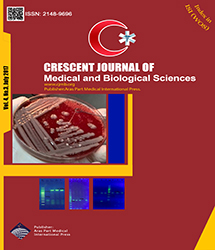
| Original Article | |
| Influence of Ethnicity on the Incidence Rate of Oral Clefts in Northern Iran | |
| Mohammad Jafar Golalipour, Nafiseh Kaviany1, Mohammad Aryaie1 | |
| 1Gorgan Congenital Malformations Research Center, Golestan University of Medical Sciences, Gorgan, Iran | |
|
CJMB 2017; 4: 115–119 Viewed : 5944 times Downloaded : 4114 times. Keywords : Cleft lip, Cleft palate, Ethnicity, Gender, Iran |
|
| Full Text(PDF) | Related Articles | |
| Abstract | |
Objective: Oral clefting including cleft lip with or without cleft palate (CL/P), are considered as common congenital anomalies, particularly in Asia population. The aim of this study was to evaluate the incidence rate of CL/P according to ethnicity in Northern Iran. Materials and Methods: This cross-sectional, analytic study was carried out on 92 420 live newborns in Golestan province, the Northern Iran, from 2008-2011. The newborns were evaluated for the CL/P and recorded according to ICD10. Gender, ethnicity and parental consanguinity were filled out for each subject. The subjects grouped according to ethnicity into native Fars, Turkmen, and Sistani groups. Results: The rate of oral clefts was determined 0.72 per 1000 live newborns. The incidence rate of CL/P was 0.69 per 1000 in males and 0.75 per 1000 in females. The incidence of CL/P among native Fars, Turkmen and Sistani was 0.96, 0.61, and 0.57 per 1000 live births, respectively. Conclusion: The incidence rate of oral clefting was lower than in our previous study (1.05 per 1000), and it was higher in the native Fars population. |
Cite By, Google Scholar
Online Submission System
 CJMB ENDNOTE ® Style
CJMB ENDNOTE ® Style
 Tutorials
Tutorials
 Publication Charge
Medical and Biological Research Center
About Journal
Publication Charge
Medical and Biological Research Center
About Journal
Aras Part Medical International Press Editor-in-Chief
Arash Khaki
Deputy Editor
Zafer Akan


















